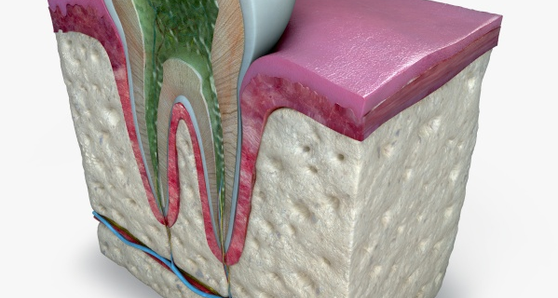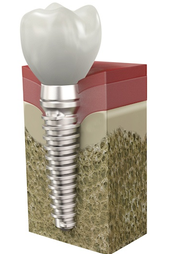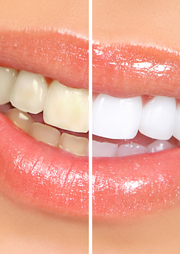The dental pulp is the soft tissue at the centre of the tooth under the enamel and dentin and contains the nerve and blood vessels. When these tissues surrounding the root are damaged by the bacteria causing caries or as a result of trauma, endodontic treatment makes it possible to save the tooth.
The objective of endodontics (root canal therapy) is to remove all the inflamed (living) pulp or infected and dead pulp (tooth necrosis) and fill up the cavity with inert material.
Sometimes urgent intervention may be necessary to treatpulpitis, the acute and irreversible inflammation of dental pulp. In these cases, the patient reports acute, spontaneous and pulsating pain (the typical toothache).
Root canal therapy on a tooth is performed under local anaesthetic and may last over one or more sessions, depending on the difficulties encountered by the dentist due to the anatomic variability of the roots. The practitioner files the root canals, using first smaller then progressively bigger files. The root canals are then filled with specific cements, which may or may not be associated with gutta percha; then a filling is applied to the crown to complete the restoration.
Some cases may be characterised by the presence of agranuloma (inflammatory tissue around the root apex) or even of a cyst (an accumulation of serum, pus, or infected inflammatory tissue). The chronic and silent development of the lesion can be interrupted by sudden abscesses. To solve the problem, the root canals must be properly cleaned, removing any residues of infected pulp. The granuloma will no longer be visible through x-rays after 6-12 months. Despite having undergone endodontic treatment, a tooth may occasionally continue to hurt or still be affected by granuloma in the root area. If this happens, retreatment or repeat treatment can solve the problem permanently.
Duringrepeat root canal therapy, the tooth must be reopened and the canals must be cleaned and filled in their entirety. Surgical treatment may be necessary in some cases. If the first treatment failed, there is no guarantee that repeat treatment will be successful, but this may be the only alternative to extraction.
In rare cases, when the tooth does not heal, the tip or apex of the root, along with the infected tissue around it, must be removed through minor surgery (apicoectomy). In other cases, root canal therapy may be necessary for prosthetic reconstruction purposes or due to hypersensitivity to thermal stimulations (pain caused by hot and cold drinks and food).
After endodontic treatment, the tooth is no longer sensitive to heat and cold or to the irritation caused by caries, which makes it even more important to undergo periodic check-ups.
The restoration method of choice for teeth which have undergone root canal therapy is a dental crown, but an inlay can be an equally valid alternative. A simple composite filling is also effective but its use in endodontically treated teeth is limited to cases in which the remaining tooth structure is sufficient to ensure enough resistance, since root canal treated teeth fracture easily due to their lower residual resistance.









